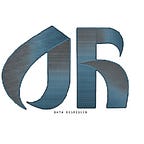Data Visualization with Tableau: Pokémon
Editor — Ishmael Njie
This year has been all about learning and acquiring new skills, so following up on my Statistical Analysis in Python: Pokémon, I thought it would be fun and interesting to have visuals that can tell us something about the Pokémon dataset!
Data Visualisation is important when portraying insights for a particular dataset. It is a big part of dealing with data as you should be able to portray data in a way that is easy to consume by the audience. Where in Python, we have libraries such as: matplotlib and seaborn to produce great visuals to represent our data, I’ve decided to look into using Tableau as a way to show insights of a particular dataset.
When starting a Data Visualization problem, you always tend to start with a question you wish to be answered, and tailor your visuals to achieve the proposed question.
So in our case, we have a dataset of around 700 Pokémon. A question you may want answered could be:
How to build a strong and resilient Pokémon Party?
With the interactive story on Tableau Public, to some extent, we can pin Pokémon against each other and make some conclusions.
1. Our first visual is an interactive table where one can sort all Pokémon in the dataset. This is a great start for a Pokémon Trainer as they can see the strength of each Pokémon based on a particular Type and Base Statistic.
2. Here, one can see which Base Statistic is higher for each PokéType (on average).
3. Some Pokémon (around 49%) have Primary and Secondary PokeTypes. A Pokémon Trainer may want to a versatile Pokémon that can learn various moves to combat a variety of Pokémon.
4. Time for the good stuff!
We have two types of Attack: Physical Attack (Attack) and Special Attack. Different Pokémon have different strengths when it comes to Attack.
To win Pokémon battles, a Pokémon Trainer needs Pokémon that are great in Attack, whether it be Physical, Special Attack or both.
Our visual above is a great indicator as to which PokéTypes amongst the rest have the best attacking qualities (Speed, Attack and Special Attack).
One thing to notice is that Fire type Pokémon have all 3 attacking qualities above average. You may argue that a Pokémon Trainer needs a Fire type Pokémon on their team!
5. It’s not all about Attack.
In battle, Pokémon need to be hard to beat. That is why it may be good to look at 3 defensive qualities: HP (Hit Points), Special Defence and Physical Defence.
Again, if we look at the top right quadrant of the individual graphs (partitioned by the average lines), we can see that Dragon Type Pokémon have higher HP and Sp. Defence than the rest of the PokeTypes, while their Defence is on par with the average. Ground type Pokémon also look to be resilient across our Physical defensive qualities; where Fairy type Pokémon tend to have a higher Sp. Defence as opposed to Physical Defence.
6. If a Pokémon Trainer wanted see how well the Attack and Defence stats of each Pokémon compare to each other, the visual below is a great representation of that.
We can see that Shuckle has an incredibly high Defence, however, its Attack is pretty woeful. In contrast, we can see that Rampardos has a high Physical Attack stat, but its Defence lets it down.
A great balance of both Attack and Defence would be Avalugg (Who favours Defence), or Metagross (Who favours Attack).
7. Similar to the comparison above, we look at Sp.Defence vs Sp. Attack. We can again see that Shuckle is rich in Sp. Defence with a low Sp. Attack. Aegislash, on the other hand, has a great Sp.Attack metric but lacks in Sp. Defence. Florges and Goodra, amongst others, seem to have a balance that is capable of dealing damage and taking a hit.
If I were to pick my team (consisting of 6 Pokémon) based on the visuals explained in this post, I would pick:
Metagross (Steel)
Avalugg (Ice)
Florges (Fairy)
Goodra (Dragon)
Infernape (Fire)
Claydol (Ground)
Tableau allows for interaction with visuals in the representation of data. Conclusions can be drawn with ease with the interactive aspect of Tableau. As there is no coding involved in creating the visuals, Tableau is user-friendly.
I hope you had fun reading this post!
Find the interactive workbook to this project on my Tableau Public profile!
